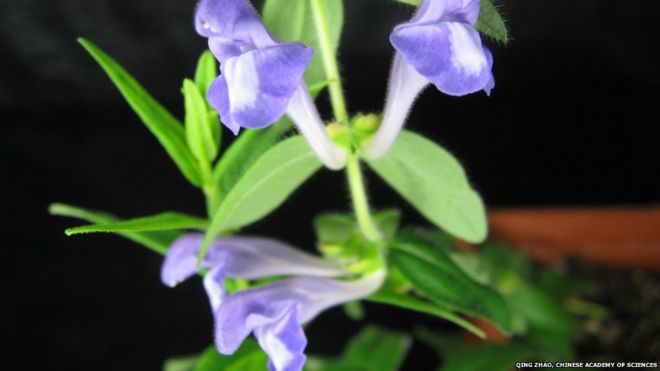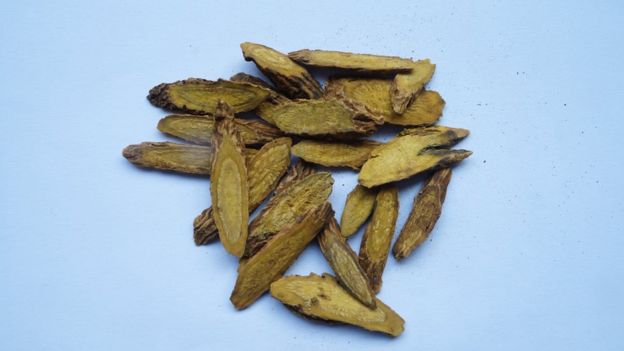- 9 April 2016
- Health
 Qing Zhao, Chinese Academy of Sciences
Qing Zhao, Chinese Academy of Sciences
Scientists have unravelled one of the secrets of a plant used in traditional Chinese medicine.
The Chinese skullcap - known as Huang-Qin - is traditionally used for fever, liver and lung problems.
Scientists have discovered that the plant uses a special pathway to make chemicals with potential cancer-fighting properties.
They say it is a step towards being able to scale up production to make new drugs.
Prof Cathie Martin, of the John Innes Centre in Norwich, is lead researcher of the study, published in Science Advances.
Working in collaboration with Chinese scientists, her team deduced how the plant,Scutellaria baicalensi, synthesises the chemicals, known as flavones.
Flavones are found widely in the plant kingdom, giving some plants vivid blue flowers.
 Qing Zhao, Chinese Academy of Sciences
Qing Zhao, Chinese Academy of Sciences
"Understanding the pathway should help us to produce these special flavones in large quantities, which will enable further research into their potential medicinal uses," said Prof Martin.
"It's exciting to consider that the plants which have been used as traditional Chinese remedies for thousands of years may lead to effective modern medicines."
Ancient remedy
Previous lab research suggests that flavones have anti-cancer properties, offering hope that they may one day lead to effective cancer treatments.
Commenting on the study, Dr Alan Worsley of Cancer Research UK, said: "This paper answers a very interesting biological question about how these plants are able to make particular molecules, but the study doesn't look at whether the molecules can be used to treat cancer.
"Instead it looks at how this compound is made in nature, which may allow scientists to make more of it in the lab and be able to research its potential uses."
This herb is a member of the mint family and native to China.
In traditional Chinese medicine, the root was used in combination with other plants to treat fever and other ailments.
There is increasing scientific interest in ancient medicinal plants.
In 2015, Tu Youyou was awarded the Nobel Prize for Medicine for her work on artemisinin, an antimalarial drug derived from the sweet wormwood plant, Artemisia annua.
The fever-reducing properties of the plant were first recognised in the 4th Century by Chinese physicians.

No comments:
Post a Comment